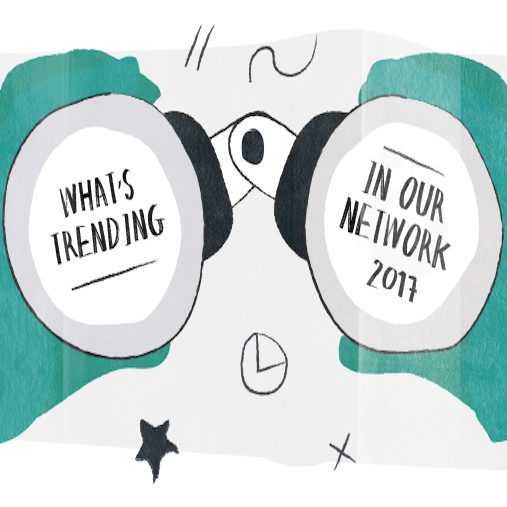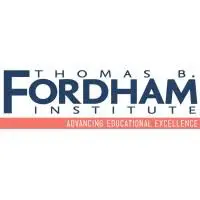Here at 100Kin10, we’re privileged to be at the center of an amazing network. All year long, we listen, collect information, and connect the dots. For the second year in a row, we’re taking a step back to reflect on what we’ve seen and share our insights with you, to help advance our shared efforts.
This Trends Report is the culmination of weeks of research, drawn from dozens of events and workshops, hundreds of conversations with experts and influencers, thousands of teacher surveys, and commissioned reviews exploring everything from social media trends to new teaching methods. We know you’re busy, so we’ve spent time picking the top insights from 2017 and a few hunches about what’s around the corner in 2018.

An Upsurge in Attention on Rural Areas
As our nation continues to grapple with political divides between urban and rural communities, major publications like The Wall Street Journal have highlighted the impacts on education. 100Kin10 has heard from our partners, through dozens of one-on-one calls and in-person conversations, that there is an increasing need to support STEM in rural contexts. But partners are not just talking.
We’ve seen exciting new partnerships forged through Project Teams, including the Gulf of Maine Research Institute partnering with the US Department of Energy, the Colorado Education Initiative, and Freeport McMoran to help foster professional learning communities in rural regions, as well as another project team led by the Colorado Geographic Alliance focused on identifying and sharing ways to best reach and support teachers in rural contexts. We’ve also been excited to see rising interest from institutions like the University of Arizona STEM Learning Center, University of Illinois, and Boise State University, while other partners have expanded their existing programs, like Urban Schools Human Capital Academy reaching beyond its name to focus on supporting rural teachers.

Student Loan Debt
Amid heightened teacher shortages, a surprising economic driver has risen to the top: not salaries, not bonuses, but teachers’ student-loan debt. As part of our work mapping the grand challenges in STEM education, we surveyed thousands of teachers, leaders, and other experts, and worked with complexity-mapping scientists to analyze the root causes of the challenges we face. We learned that there are six key catalysts that have the greatest leverage to create change across the entire STEM ecosystem, and only one is related to money: student debt.
Meanwhile, in July, NPR Education shared results of its poll of 2,000 teachers and found chronic concerns over the rising cost of higher education and the increasing reliance on loans to pay for it. 100Kin10 partner the California State University system responded to these needs by removing administrative barriers and finding innovative ways of supporting students to access loan forgiveness, and the number of students enrolled in teacher-preparation programs statewide has risen. Perhaps the old adage “as goes California goes the nation” will hold true here, too.
Building bridges between STEM Educators and Professionals
With 10 of the top 14 fastest growing industries requiring STEM training, we know the future of our country’s workforce depends on STEM education. In order to prepare students for those careers, teachers need to maintain strong connections with STEM industry. We heard this loud and clear at our Back To School breakfasts and from our Teacher Survey, where 84% of respondents reported that they want more opportunities to collaborate with STEM professionals.
This is not just an unrequited dream. Partners ranging from New York Academy of Sciences, Community Resources for Science, the Center for STEM Education at UT Austin, Ignited, and Lockheed Martin are all working on expanding the intersection between teachers and STEM professionals, as is the US Department of Energy with its new STEM Mentoring Cafes, where STEM industry professionals connect in person with teachers and students. This year we even saw Oracle build a new public school on their campus.

Active STEM
There is a steady drumbeat for more active STEM learning across the country. From our Teacher Forum to our Annual Summit and on hundreds of one-on-one calls, we heard the demand growing, and we’ve seen great progress in 2017. In our Teacher Survey, 80% of STEM educators reported that they participated in professional development specifically aimed at designing and implementing active STEM learning.
This year we launched a Networked Improvement Community on active STEM learning and made more than $2M in grants to support active early childhood STEM education. STEM-rich institutions like the New York Botanical Garden, the American Museum of Natural History, the Intrepid Sea, Air & Space Museum, and the Smithsonian Science Education Center also initiated new programs, in partnership with districts and schools, to bring active and inspiring STEM to teachers and, through them, to students.

OUR PREDICTIONS FOR 2018
As we round out 2017 and look toward 2018, we’ve got our ears to the ground, listening for what’s coming around the bend. Here are four areas of work that are buzzing with activity.

Embracing the Importance of School Culture
Through our work mapping the grand challenges in STEM, we identified the highest-leverage root causes of the STEM teacher shortage, and, based on an analysis of over 22,000 data points and a simulation that ran the numbers 1,000 times, school culture rose to the top, with three of the six catalysts directly related to the culture of professional learning, collaboration, and accountability. This should come as no surprise, as data roll in about the importance of work culture to organizational performance.
Our Teacher Survey confirmed this, with 69% of respondents reporting that their principals prioritize little to no time for them to collaborate and learn from other STEM teachers in their school or district. We also conducted hundreds of one-on-one interviews with partners and noticed a shift toward making schools great places to work, with a focus on how principals support STEM and how much time teachers have to collaborate with other STEM educators.

Teacher Shortages and Emergency Credentials
STEM teacher shortages are nothing new (obviously; otherwise, 100Kin10 wouldn’t exist), and through daily STEM education media clips, we’ve seen reports of states revisiting an old strategy for addressing them: turning to emergency credentials to fill vacant teacher spots as fast as possible, despite controversy and problematic results the last time this was tried.
The Wall Street Journal and PBS Education both wrote about this trend, highlighting half a dozen states introducing bills and legislation to enable emergency credentialing for teachers, while many local news sources have reported on their own states’ activities exploring a variety of stop-gap measures to address teacher shortages in Virginia, Mississippi, New York, Minnesota, Arizona, Illinois, Colorado, and a handful more. We heard about this on one-on-one calls from a diverse range of partners, from districts to universities, and with teacher shortages rising nationwide, we’re expecting to see more action around this in 2018.
Teachers’ Political Advocacy And Policy Engagement
More than any other time in history, understanding the basics of science is essential for a functioning democracy. Over the past year we’ve seen educational leaders of all stripes become more active in policy and politics in support of STEM education.
Through our ESSA Solutions Lab, partners like National Center for Technological Literacy at the Museum of Science, Boston and Washington STEM created resources and outreach initiatives for teachers and STEM supporters to become more engaged in policy decisions. Meanwhile, the American Association of Physics Teachers partnered with American Modeling Teachers Association, PhysTEC, and the Kenan Fellows Program to explore how to build capacity for STEM teachers to engage in policy leadership. We also saw dozens of partners participate in the March for Science in Washington, D.C., and 100Kin10 helped the effort by creating a toolkit for teachers that was downloaded over 5,500 times around the country.
This trend-line isn’t moving all in one direction, though. A recent EdNext article pointed out that 65% of teachers avoid political activities, in part out of a concern that participating might create problems with their jobs.
Sticking With It and Figuring Out What Works
Since 100Kin10 was launched, we have consistently sought to improve what we do, so we get excited when we see partners doing the same. This year, 89 partners dove headfirst into the world of improvement science through 100Kin10’s Networked Improvement Communities. Countless partners, including USC Rossier School of Education, the UTeach Institute, Maricopa County Education Service Agency, ExxonMobil, and WestEd, worked through the network to identify specific practices that can help others improve.
Shifting the lens, like the iconic Eames Power of 10 video, from the organization to the individual, we’re seeing an uptick in attention on the individual’s ability to grow and improve. These non-academic factors, like growth mindset, determination, and collaborative problem-solving, measured for the first time this year by the OECD’s PISA, are widely shown to lead to success and are particularly critical – and perhaps best cultivated – in the STEM fields. Most of the focus is on students, but we saw partners pay attention to the same needs for teachers in our third Fellowship, focused on teacher experimentation in STEM. Whether and how the field takes up these ideas, and how they affect not only how we approach students but also teachers, remains to be seen.

TWO BIG BETS OF 2017
In 2017, 100Kin10 has been focused on mapping opportunities for systemic change in STEM education by looking for the highest-leverage areas to impact. Here are two bets we made that we thought you’d find interesting.

1 – Listening to Teachers, Because They See Things We Don’t
In 2017, we launched our first-ever Teacher Forum, a unique way for 100Kin10 to hear directly from scores of teachers across the country – and then share those insights with our partners and the field. We kicked off the year with a listening session about how schools value and prioritize STEM and heard about opportunities for teachers to take action, from helping to appoint veteran teachers as STEM coordinators, to being “STEM-intrapreneurs.” We distilled four common themes: the best collaboration is teacher-driven, administrators are fundamental to teacher collaboration, continued experimentation and learning by teachers leads to innovation, and, somewhat surprisingly, underperformance can act as a catalyst, leading to greater appetite for experimenting with new methods and approaches.

2 – Systems Thinking and the Levers of Change in STEM
We realized that even though we’re on track to reach our goal of 100,000 STEM teachers, doing so wouldn’t actually solve the deep-rooted challenges STEM education faces, so in 2015 we launched an unprecedented multi-year research effort. We surveyed thousands of teachers, nonprofit leaders, policy makers, funders, and other experts to help us map why it is so hard to get and keep great teachers, especially in STEM.
In 2017, we released the culmination of that work; the Grand Challenges interactive website, a first-of-its-kind tool that maps the entire STEM ecosystem, including high-leverage places for action, easy-to-read literature reviews, and a directory of organizations working on each issue. Since launching this summer, the website has been viewed over 13,000 times and written about in publications from Inside Philanthropy, Geneva Global and THE Journal, to Inc., HuffPost, and EdSurge. But most importantly, we’ve seen this work change the way partners think about their practice. Through project teams, networked improvement communities, and solutions labs, we’ve seen partners adopt new collaborative and systems-oriented approaches to solving problems that have existed for decades.

LOOKING BACKWARDS
Last year we looked into our crystal ball and tried to predict what we’d see more of in the coming year. Since hindsight is 20/20, we’re taking a step back to assess just how accurate our crystal ball really was, and what we can learn from our predictions.
Giving Teachers Permission to Fail
Last year, we surveyed thousands of teachers and heard loud and clear that they wanted more opportunities to experiment. We saw this come up again in our Annual Survey. In response, we focused our third Fellowship on creating classroom and school environments that give teachers room to experiment, which engaged 26 participants from 9 different partner organizations.
At the end of 2017, we announced $1 million in grants to support innovative efforts to increase experimentation for teachers. Diverse partners, ranging from The Fund for Public Schools, to the Math Teachers Circle Network, to the Center for the Future of Arizona, are each leading new efforts as a result. We’re hopeful about the attention that school culture and teacher experience are getting, even as we see a long road ahead to really embed an ethos of experimentation in schools.
The Rising Importance of Race, Class, and Gender Equity
At the beginning of 2017, we predicted there would be more focus on addressing inequality in STEM education, and through our media analysis we saw dozens of major publications write about issues of equity in education across gender, race, and class. We know the challenge is still there, as we heard directly from hundreds of teachers in our survey that students with diverse ethnic and racial background have little exposure to high-quality STEM courses. We saw a handful of partners working to address issues of diversity head on, like NewSchools Venture Fund, which put out an action-oriented report and RFP specifically to support diversity in education leaders and saw a 3x increase in applications. We also saw activity at our Unconferences, where dozens of partners chose to focus their energy on addressing the issues of equity in teacher recruitment, as well as through our ongoing work around grand challenges, where 33 partners tagged at least one of the 9 diversity-related challenges as one of their top 3 areas of focus.
Yet we were also surprised we didn’t see more, particularly in a year when politics and civic dialogue have been so focused on equity. So the question remains: What will it take to get more activity around equity in STEM education?

Integrated STEM and Real-World Applications
Last year we highlighted the push for more integrated approaches to teaching STEM. Along the same lines, we thought we’d see a push for thinking more broadly about STEM disciplines, incorporating real-world issues in the classroom, and bringing in subjects like medicine, statistics, and even the arts into the conversation.
At our Back-to-School breakfasts this year, we saw multiple partners create goals for the coming year around interdisciplinary work and the incorporation of complementary disciplines into their course materials. But we didn’t observe a groundswell. We know the lack of activity isn’t from lack of interest: we heard from partners in dozens of interviews that they’re still eager and looking for new opportunities and resources. We know the power of STEM is only increased through cross-disciplinary collaboration, so we’ll keep tabs on these efforts in 2018.



